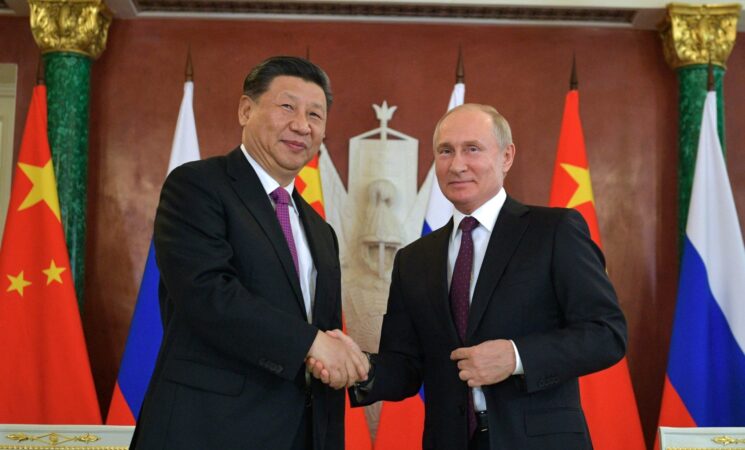29 July 2020, NIICE Commentary 5729
Dr. Uma Purushothaman
The recent controversy over the celebration of 160 years of the founding of Vladivostok, the most important city in Russia’s Far East, might be a sign that Russia-China relations are not as resilient as some believe. The controversy began when the Russian Embassy in China posted a video of the celebrations held on 2 July on the Chinese social media site, Weibo. This provoked a backlash from Chinese social media users, including journalists and diplomats, who recollected that the territory of Russia’s Primorsky Krai province and its capital, Vladivostok, were formerly part of China under the Qing dynasty and was handed over to Tsarist Russia through an “unequal treaty” named the treaty of Aigun in 1858 after the Second Opium War. The Chinese citizens claimed that the celebrations reminded them of the humiliation that China had to go through in the 19th century. The Russian Embassy finally had to take down some of the posts it had posted on Weibo though the Chinese Foreign Ministry did not make any statement on these claims.
Russia and China share a 4209 km long border. The incident certainly would open up old concerns in Russia about its borders in the Far East with China though the borders have been settled through agreements reached in the 2000s. In July 2008, China and Russia signed an agreement which marked the mutual acceptance of the demarcation of the eastern portion of the Chinese-Russian border and the Chinese never brought up Vladivostok as a disputed territory. In fact, Russia ceded territories in settling its borders with China.
However, there is concern in Moscow that the natural resource-rich Russian Far East could get overrun by the Chinese, primarily because of the huge demographic imbalance: while the Russian Far East hosts 6 million people (with an average density of less than 1 person per square kilometer) in comparison to the three bordering Chinese provinces, Heilongjiang, Jilin and Liaoning, which are home to around 109 million people. The region, which is over one-third of Russia’s total territory, is also underdeveloped compared to the bordering Chinese provinces. Russia has been worried about Chinese migrating to the Russian Far East to work, with some analysts even terming it as Russia’s “Yellow Peril”. However, the migration has not been huge primarily because the Chinese have more opportunities and better facilities on their side of the border. Interestingly, the Russia-China border clashes of 1969 also took place along the Far East’s border with China along the Ussuri River. The fact that Russia has deployed a unit of its S-400 air defence missile system in its Eastern military District, headquartered in Khabarovsk city, in the Russian Far East is telling.
On its part, Russia has been trying to address the underdevelopment of the region by giving tax incentives and subsidies. It set up a separate ministry for developing the Russian Far East in 2012. It has also been trying to attract investments to the region from Asian powers like South Korea, Japan, the ASEAN countries, China, and India, partly to prevent the region’s overdependence on China. Russia has hosted the Eastern Economic Forum every year since 2015 in Vladivostok, its largest port on the Pacific Coast, for encouraging foreign investment in the Russian Far East. Its pivot to Asia in 2011 was meant to harness the potential of the Asia Pacific region for developing the Far East while also allowing it to play a bigger role in the region.
China’s recent aggressiveness towards most of its neighbours, including India and now even Bhutan, would not have gone unnoticed in Moscow. This is particularly so because China’s irredentist claims with countries in the South China Sea for instance, are based on history dating back to the 13th and 14th centuries and Primorsky Krai and Vladivostok share precisely the same kind of history with China.
Russia and China are often described as allies, particularly by Western analysts. It is true that Russia and China are closely intertwined, bound by their common adversarial relations with the US. China is Russia’s biggest trading partner after Europe and the two countries have strong military ties, including sales of weapons and military exercises. However, these analysts forget that there are differences between Moscow and Beijing on several issues. For instance, Russia has been cooperating with Vietnam and selling it arms, much to China’s unhappiness. Its energy companies have been carrying out oil and exploration in the South China Sea, well within China’s infamous “nine-dash line”. Moscow resents Beijing’s proactive policy and economic ambitions in the Arctic as China is a non-Arctic country and Russia feels it should have dominance in this region as its own coastline accounts for 53 percent of the Arctic Ocean coastline. Third, Russia is wary of China’s economic and political influence in Central Asia, which it considers its near abroad and part of its sphere of influence. Finally, this latest controversy only serves to accentuate Russia’s concerns about its Far East and Chinese designs on it.
So, it is possible that there could be shifts in the balance of Russia-China relations in the future and that Russia recalibrates its relationship with China though this might be difficult considering its overdependence on China for trade and investments and its current rupture with the West. Since there have been no statements from either government about the Vladivostok controversy, it will not derail the Russia-China relationship. However, it gives Russia pause for thought about the future direction of the relationship. It further gives Moscow incentives to attempt to reset its relations with the West. And this is an opportunity which the West, particularly the US, should consider as it will strengthen its hands in dealing with its long-term threat, China. As for India, it will certainly be watching these developments with great interest given its fraught relations with China and its traditionally friendly relations with Russia.

